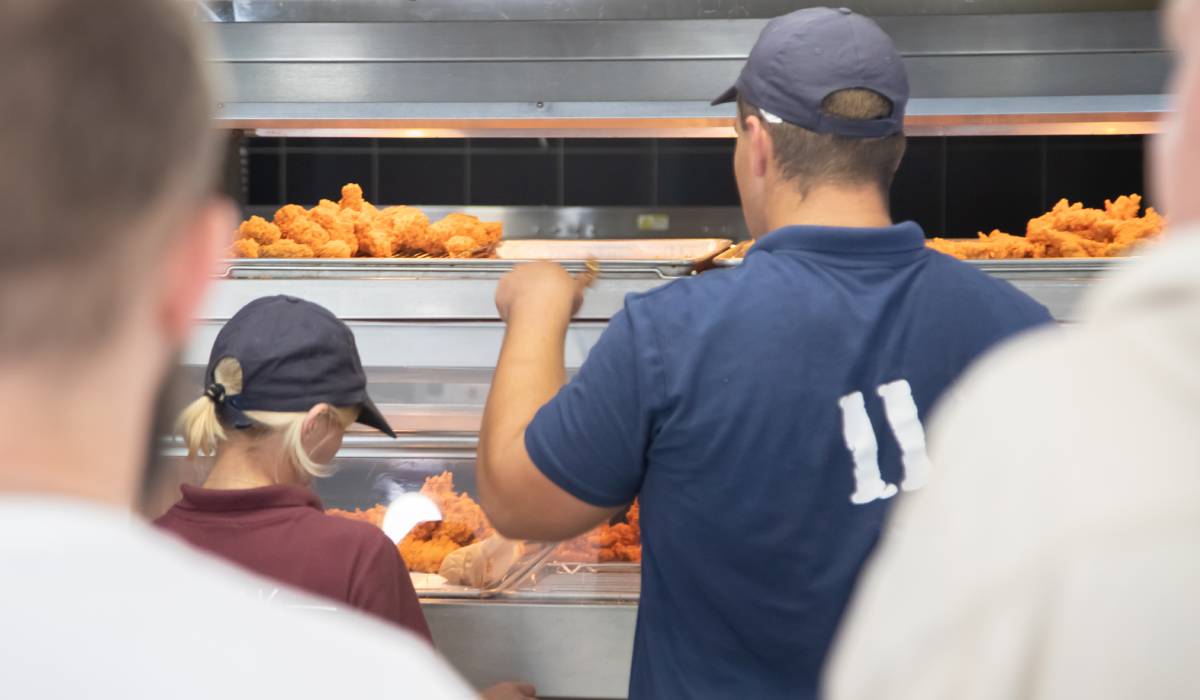Among the many challenges facing the restaurant industry throughout the pandemic, staffing has been a constant woe. Relying primarily on off-premises sales for over a year, many operators were forced to furlough, or even permanently let go of their staff. While the combination of reduced limitations on indoor capacity and warmer months upon us is spurring optimism for the future of the industry, getting employees to return to work remains an uphill battle.
To effectively meet the demands of customers amid rising restaurant sales, operators need to step up their recruiting, hiring and retention game, and tech-driven staffing solutions can play an impactful role. Still competing for labor with platforms like Uber Eats and DoorDash, restaurants can also take a page from the gig economy playbook by offering their workers gig-like flexibility, but with added benefits and protections.
Find Employees Faster & Smarter
Technology permeates nearly every aspect of our daily lives, so there’s no reason why it shouldn’t play a larger role in restaurants’ recruitment efforts. During a labor shortage especially, time-consuming applications are no longer efficient for job seekers looking for work, or for managers who need their openings filled stat. Placing a simple QR code on the front of an establishment or on a local job listing board can enable applicants to quickly scan and review job descriptions to determine if it’s a fit.
Beyond recruitment efforts, hiring itself can stand to be streamlined. One solution is a centralized platform that keeps employees’ experience and referrals all in one place. Restaurant industry skills are often interchangeable from one job to the next, so this approach can allow job seekers to easily seek new, similar opportunities and managers to identify qualified applicants, without forcing either party to complete or review long-winded applications. These types of solutions also make the onboarding process more efficient in the long-run, allowing qualified applicants to begin work quicker without requiring extensive, costly and oftentimes, unnecessary training.
Offer Flexibility to Out-Hire the Competition
A tight labor market equates to a competitive labor market. Restaurant operators are seeking the same employees, and are simultaneously competing with the burgeoning gig economy. Restaurants should be encouraged to differentiate themselves in order to attract new employees, beyond incentives like pizza parties and employee raffles.
A recent study has shown that lower-wage workers generally have less access to voluntary flexibility than higher-wage workers, even though if it were available to this population, the outcome could be powerful. Particularly coming out on the other side of the pandemic, the part-time workforce is struggling, often juggling multiple jobs to make up for lost wages. Now more than ever, offering restaurant workers more autonomy to work when their schedule best allows can help operators attract employees.
However, restaurants still require some level of structure and dependency from the workforce, which is why flexible work for the industry has not always been an option. Today, operators can leverage tech-driven mobile apps that not only allow managers to broadcast open shifts to eligible workers—days ahead or at last minute—but enable workers to create their own schedules. A similar concept to the gig economy business model, restaurants can take this approach one step further by offering benefits.
Benefits are Key to Keeping Employees
Finding and onboarding staff quickly enough to meet the needs of the re-emerging restaurant industry is a challenge, but effectively retaining employees is equally as important. According to the U.S. Bureau of Labor Statistics, the accommodation and foodservices sector reported 1.3 million job openings in April, but the quitting rate is at 5.6 percent—an all-time high. This fast turnover severely impacts restaurants’ bottom lines. The cost to replace an employee who earns $10 an hour exceeds $3,300. While flexible schedules can do wonders in keeping employees happy, benefits and protections are a critical incentive that can further help restaurants retain their staff, and better compete with the likes of the gig economy.
The restaurant industry relies largely on part-time labor, so the idea of offering benefits to this population has not always been feasible, due to high costs and time-consuming administrative duties. But it’s important to remember, staffing solutions are not just beneficial to the corporate world. Today, restaurant operators can work with staffing platforms specializing in the employment of the part-time workforce to help them embrace employer status. The business model is similar: the staffing entity serves as the employer, and the restaurant itself is able to use the workers to staff their operations. With this approach, the staffing platform handles administrative and employment responsibilities, including issuing benefits and protections to eligible employees, and the restaurant’s management can get back to focusing on meeting the needs of the customers.
The labor shortage is improving month over month, but we can’t forget that restaurant staffing was a tedious, time-consuming and costly challenge for operators long before the pandemic ensued. In our new world, old methods of recruiting, hiring and retaining workers are no longer efficient, and the pandemic has only prompted the industry to begin making substantial changes to these processes.
Technology can serve as an essential tool to help restaurants get staffing back on track post-COVID, enabling them to more easily connect with the ready to hire workforce. Further, the value of offering our restaurant employees gig economy-like flexibility and embracing employer status to offer much-needed benefits and protections is critical as well. Restaurants must remember that employees are what keeps their customers served and business afloat, so it’s time to rethink how we engage with them.
Scott Absher is CEO and co-founder of ShiftPixy, a staffing enterprise that designs, manages, and sells access to a disruptive, tech-driven platform, focused in the restaurant and hospitality space. ShiftPixy helps businesses connect with and manage their workforce, and remain compliant with part-time employee mandates, while allowing them to self-deliver a better customer experience.














